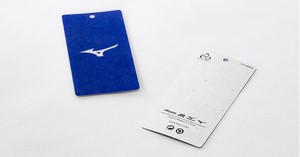Materiality
Reduction of waste
Basic Concepts
To help prevent environmental pollution and create a world that uses sustainable resources, Mizuno puts effort into reducing waste by taking into consideration its products’ life cycles, from the designing and manufacturing stages to product use and disposal. In addition, Mizuno ensures that industrial waste generated at each of its offices is disposed of properly by checking manifests and regularly visiting offices. Mizuno’s main offices operate based on digital manifests.
Reduction of Industrial Waste
Mizuno’s manufacturing bases have long been committed to reducing industrial waste. For FY 2022, the target for industrial waste emissions was set at 126.8 tons, but the actual result was 156.7 tons. This was a 20.6% increase over the target and a 23.6% increase compared to the previous fiscal year.
This was largely due to the need to dispose of leather scraps that became subject to valuable trading, particularly as demand decreased in the wake of the COVID-19 pandemic.
Gross weight of industrial waste by base [*b]

Efforts Towards Resource Recycling
Mizuno is committed to reducing the total amount of waste at its domestic manufacturing bases, emphasizing reuse and separation, and sharing information between business locations to turn waste into valuables for recycling as resources. Mizuno Technics recycles 99.8% of the industrial waste it generates. Starting in fiscal year 2020, leftover leather from glove manufacturing has been recycled and sold as valuable material, and at sales locations, it is processed into DIY leather sheets for effective use.
* General waste is not included in Mizuno’s zero emission goal.
Reducing the environmental impact of apparel product tags
Mizuno will start using mixed paper that contains offcuts generated during the cutting of the apparel fabric, for the product tags of new apparel introduced in the 2023 spring / summer season for the Japanese market. Through this initiative, we aim to reduce wastage of apparel material and minimize the use of paper resources. We are also working on reducing the use of product tags itself by simplifying, consolidating and digitalizing tags, with a view to reducing the number of product tags by approximately 4 million pieces per year.
Through these efforts, it is expected that we will reduce CO2 emissions by approximately 11.8 tons annually.

For more information, please refer to https://corp.mizuno.com/en/articles/0045
Gross weight of waste by treatment method being adopted at Mizuno’s domestic manufacturing bases (four factories) and waste sold as valuables [*e]
Mizuno’s plastic waste zero declaration
Mizuno puts effort into reducing plastic waste in collaboration with its entire value chain. Mizuno promotes the use of recycled plastics in its manufacturing process. Mizuno’s factories and offices put effort into sorting waste and recycling plastic waste to produce solid fuel and manufacture various kinds of equipment. In addition, Mizuno’s stores put effort into reducing garbage by promoting simple packaging. Furthermore, Mizuno’s Osaka Head Office puts effort into helping reduce garbage in the following ways: 1) cleaning the streets of the Cosmo-square district and 2) helping the local community clean the riverbed of the Yamato River in collaboration with Kansai University.
All stores around the world directly managed by the Mizuno Group have switched to packaging purchased goods in environmentally friendly paper bags, instead of plastic bags, which are more likely to be disposed of immediately. Mizuno also aims to switch to packaging caddie bags and golf clubs, which require bags relatively more durable than regular paper bags, in environmentally friendly bags as soon as possible.
Future issues to be addressed
- Mizuno aims to not only reduce emissions generated during its manufacturing process but also reduce its use of packing material and packages, and it aims to do so by planning ahead how it could reduce waste, beginning at the designing stage of its manufacturing process.
- Up until now, efforts to reduce waste have primarily been made by manufacturing bases. However, to reduce as much waste as possible, Mizuno will apply what it has learned through such efforts to reducing waste at its non-manufacturing bases that currently generate relatively large amounts of waste.
- Mizuno will also encourage Sharp Sangyo Co., Ltd., a group company, to adopt digital manifesting, a technology it has not yet implemented.
